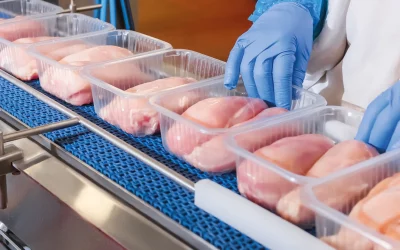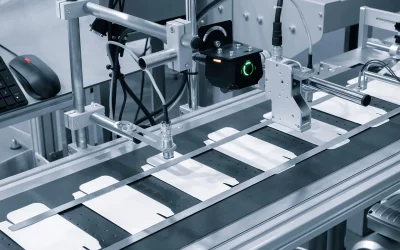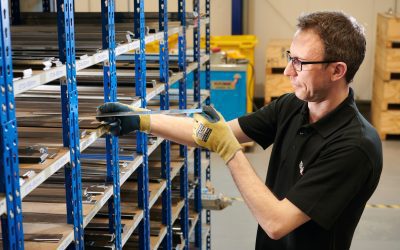The blades, knives and equipment that make up your production line must withstand a lot. The nature of the food industry will expose steel to things such as water, food acids, heat and cleaning chemicals to name a few. If you choose the wrong grade, it can result in deterioration, rust and corrosion which are all things that can have a detrimental impact on the efficiency of a food production line.
Stainless steels should be easy to maintain and easy to clean so you can maintain strict hygiene standards.
Achieving a Balance
There are two types of stainless steels that we supply, 420 steel and 440 steel. The first of these, 420 is ideal for food preparation or processing applications featuring approximately 0.38% carbon. While it is softer than 440, 420 steels are very tough and they demonstrate high resistance to rust and corrosion making them ideally suited to certain types of production line.
The tensile strength of 420 steel blades will depend on the extent of its heat treatment temperature. When the blades are exposed to lower temperatures during heat treatment, they display a higher tensile strength.
The second type of steel falls into the 440 categories. It’s a stainless steel with a higher carbon content than the 420 steel. Typically, it has carbon content that varies between 0.65% and 0.75%. It is the most resistant to rust from all of the 440 steel varieties too.
The stainless steel that’s right for your application will depend on its use. The steel needed in a plant dealing with the creation of confectionery will have very different requirements to a plant that specialises in the manufacture of sauces for example.
Food Manufacturing
It is important to be aware that the resistance of stainless steel can be increased by electropolishing. The use of this technique will enhance the oxide layer that protects the stainless steel, but it will also remove microscopic valleys and peaks which are found on the surface of the alloy, making it more difficult for food to adhere to the steel. It also makes the material easier to clean.
The maintenance of stainless steel goes a long way to extending its natural lifespan. An iron or mild steel brush should never be used on stainless steel sheet metal as this can transfer iron particles onto the surface of the steel and reduce the effectiveness of the protective oxide layer.
When you take the time to find out the right grade of stainless steel for your food production line, there is no room for issues such as corrosion, deterioration or damage to the surface. Smooth surfaces will enable the product to be cleaned more easily and it will also reduce the risk of corrosion.
Corrosion Considerations
One of the major factors that can affect the longevity of stainless steel is corrosion. Therefore, corrosion is an important factor to think about when it comes to exploring options for stainless steel blades, knives or manufacturing equipment. There are many types of corrosion that you should be aware of including:
Pitting and Crevice – When working with food items that are highly acidic and where the temperatures are high, this will increase the likelihood of crevice pitting and corrosion. This type of corrosion will display deep pits on the surface of the steel. Crevice corrosion will occur in crevices that are found on steel.
Stress – This type of corrosion will occur on a localised basis and will display as cracks in objects that are susceptible to corrosion and heat.
Intergranular – Another type of localised corrosion found near the welds in components and/or machinery.
To avoid or reduce corrosion as much as possible, it is important to maintain a thorough and regular cleaning schedule. Maintaining stainless steel equipment is important because it will prolong its lifespan. To maintain the quality of food-grade stainless steel and keep them fully operational, cleaning is essential.
Overall, stainless steel is one of the most popular and safe materials for use in food production environments. This is because:
- The material is able to withstand day to day wear and tear and resistance against dents, scratches and breaks.
- It is easy to clean.
- It doesn’t require any form of protective coating.
- The properties of stainless steel do not absorb smells or flavours which stops them from being transferred between food items.
- The material has a high level of resistance to erosion from acids contained within food ingredients.
The finish of the stainless steel can also affect its ability to carry out its function in food processing. This is important because stainless steel must be able to deter the growth of bacteria and other pathogens that could cause contamination to the food production process.
It is important to remember that not all food-safe stainless steels are created equally. There are many food grades that are available, and each will have its own strengths, weaknesses and properties, making it suitable for certain applications and not others. Extremes in temperature also have the ability to affect the quality and durability of the stainless steel.
Understanding the properties, strengths and weaknesses of stainless steel is important before you decide which grade is the best one for the products that your operation processes and deals with on a regular basis.


 +44 (0) 1909 519815
+44 (0) 1909 519815 


